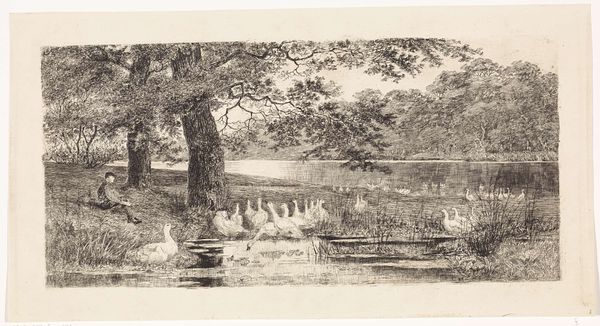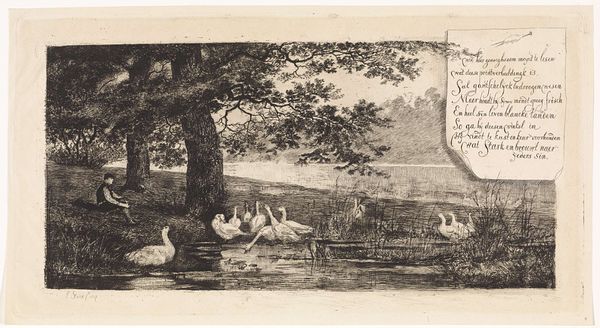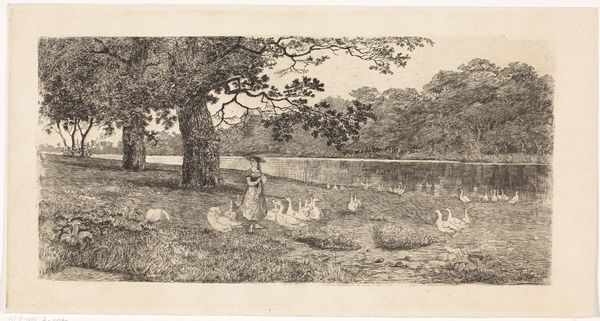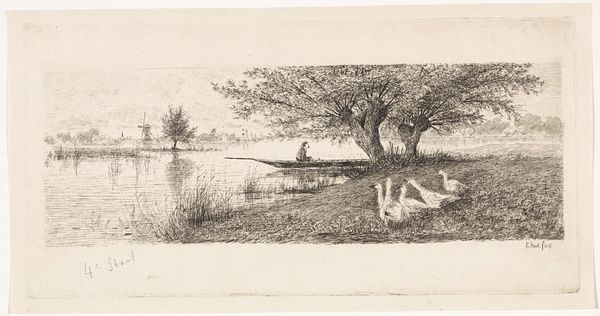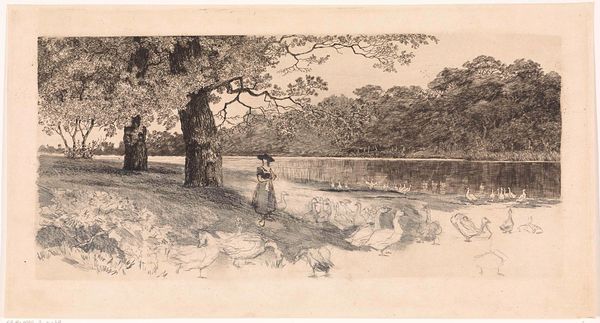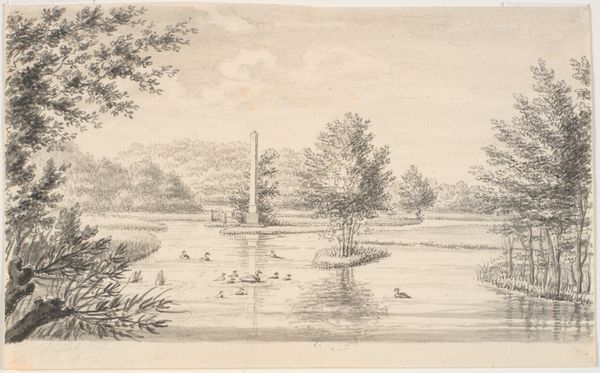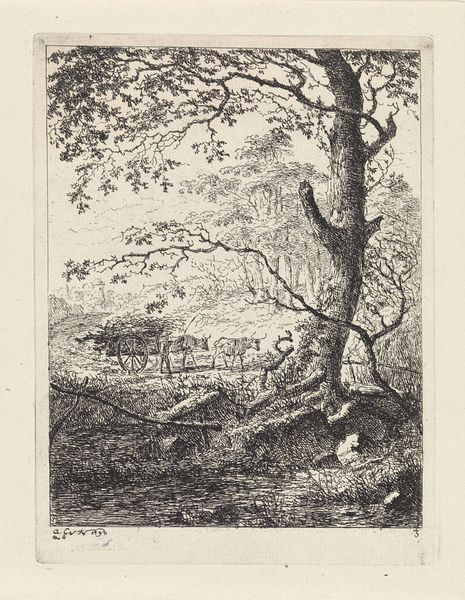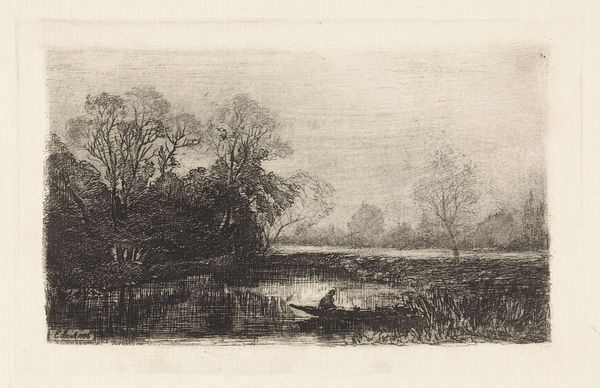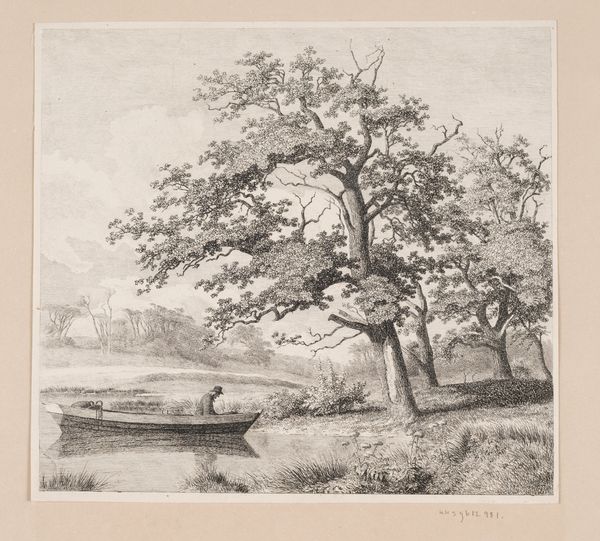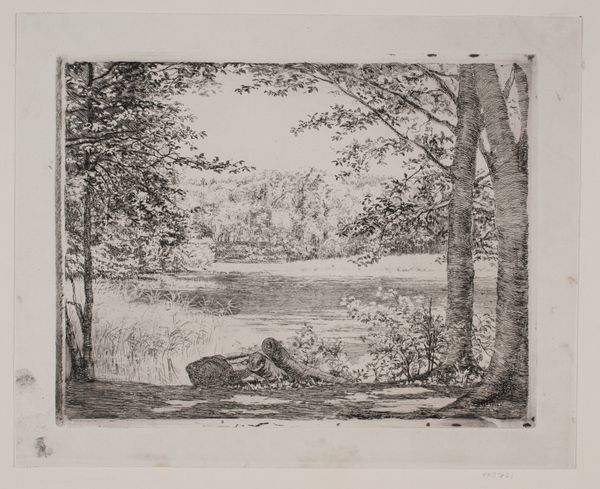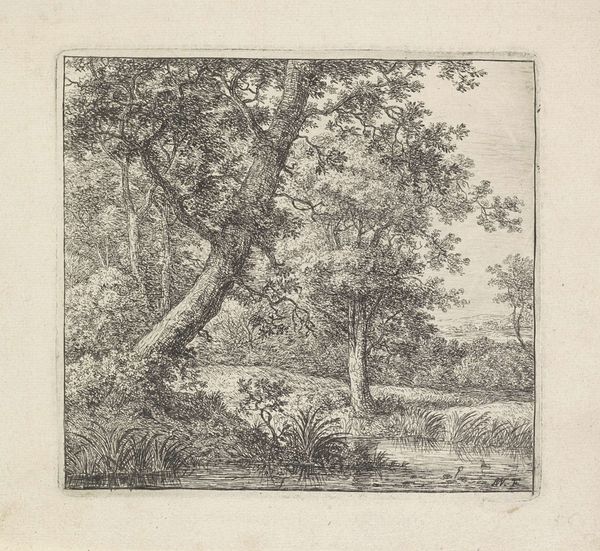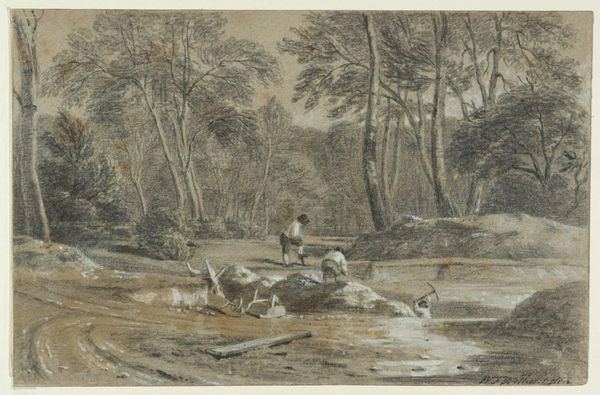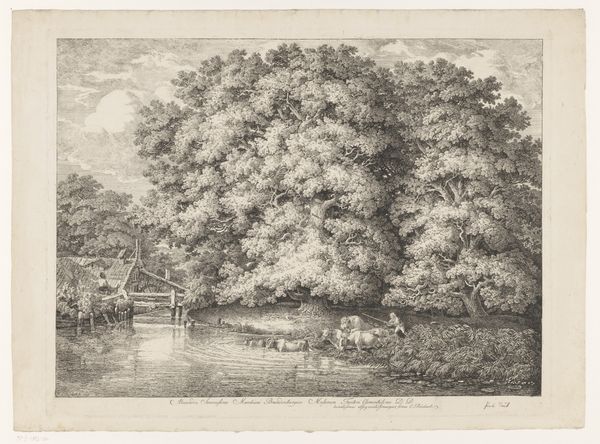
print, etching
# print
#
etching
#
landscape
#
genre-painting
#
realism
#
monochrome
Dimensions: height 217 mm, width 410 mm
Copyright: Rijks Museum: Open Domain
Curator: This is "Geese by the Water," an etching made in 1887 by Elias Stark, here on display at the Rijksmuseum. Editor: The first thing that strikes me is the monochrome palette and how it adds to the contemplative, peaceful feeling. The geese clustered together, contrasted against the figure of the boy sitting alone—it almost feels melancholy. Curator: Indeed. Let's consider the etcher's technique. Stark created this through meticulous labor, manipulating acid and metal plates to generate those fine lines and nuanced tones we see across the surface. He harnesses the mechanical reproducibility of printmaking but imbues it with a very particular aesthetic. Editor: And think of who this "particular aesthetic" serves. We have this idealized natural setting where class and labor are deliberately obscured. Who is afforded the leisure to enjoy this seemingly untouched pastoral scene? It makes me consider how constructions of "nature" frequently exclude narratives of marginalized communities and the labour connected with its maintenance. Curator: That’s a valid point. Stark was trained at the Rijksakademie in Amsterdam, so his grounding was in very traditional academic approaches. What's compelling here, for me, is his subtle elevation of a very commonplace subject. There's a sense of elevating these ordinary waterfowl through careful composition and masterful printing techniques. We're also looking at the increasing commodification and accessibility of art via printmaking; these images could be distributed widely. Editor: Precisely, that accessibility further emphasizes the importance of considering its audience and impact. Who has access, and who is rendered invisible within such artistic representations? The presence of that lone figure in the background raises questions of labour, even in its apparent absence. We must contextualize idyllic visions within their social fabric. Curator: Food for thought! Thank you for offering an important alternative perspective on this tranquil scene. Editor: It reminds us to interrogate even the seemingly innocent. The quiet of the pond should never deafen us to the whispers of the past, and hopefully the future, in plain sight.
Comments
No comments
Be the first to comment and join the conversation on the ultimate creative platform.

